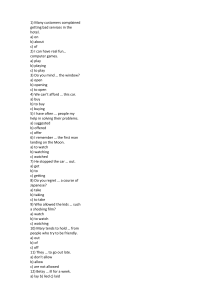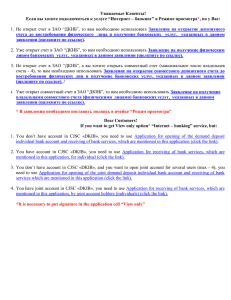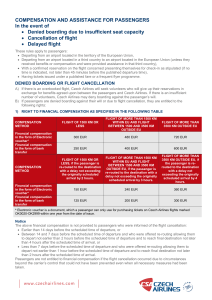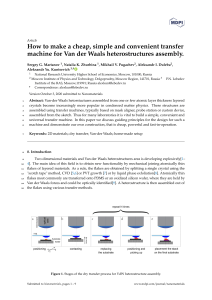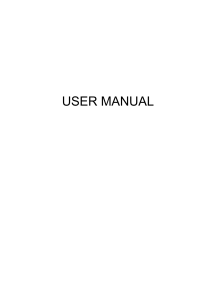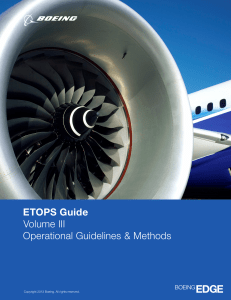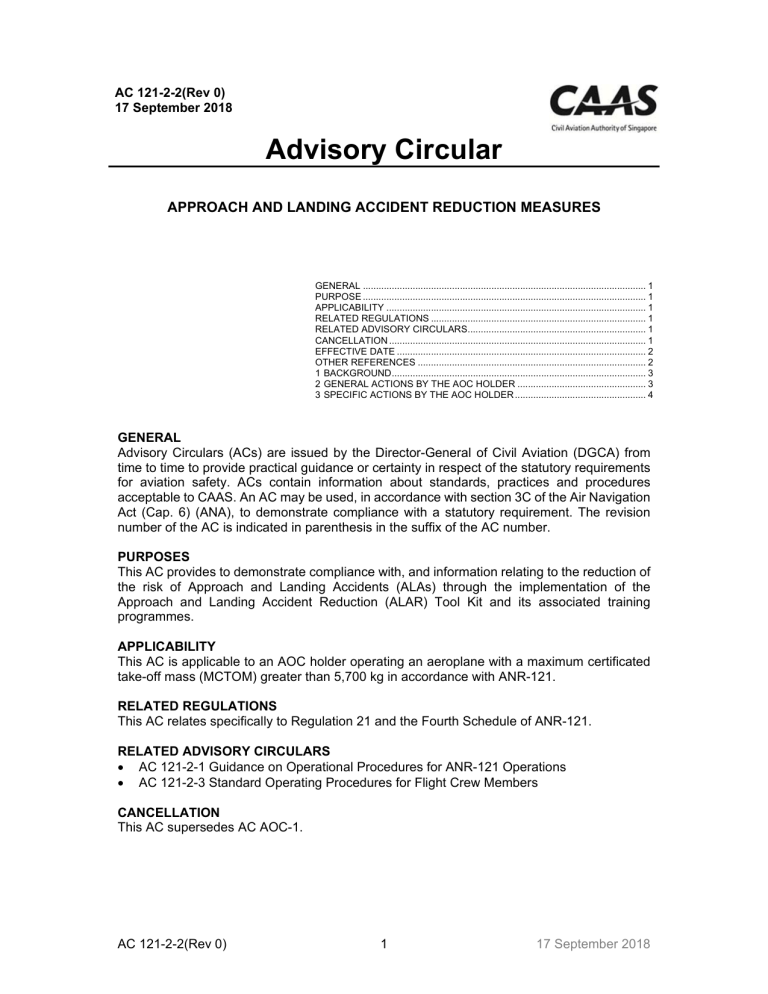
AC 121-2-2(Rev 0) 17 September 2018 Advisory Circular APPROACH AND LANDING ACCIDENT REDUCTION MEASURES GENERAL ............................................................................................................ 1 PURPOSE ............................................................................................................ 1 APPLICABILITY ................................................................................................... 1 RELATED REGULATIONS .................................................................................. 1 RELATED ADVISORY CIRCULARS .................................................................... 1 CANCELLATION .................................................................................................. 1 EFFECTIVE DATE ............................................................................................... 2 OTHER REFERENCES ....................................................................................... 2 1 BACKGROUND ................................................................................................. 3 2 GENERAL ACTIONS BY THE AOC HOLDER ................................................. 3 3 SPECIFIC ACTIONS BY THE AOC HOLDER .................................................. 4 GENERAL Advisory Circulars (ACs) are issued by the Director-General of Civil Aviation (DGCA) from time to time to provide practical guidance or certainty in respect of the statutory requirements for aviation safety. ACs contain information about standards, practices and procedures acceptable to CAAS. An AC may be used, in accordance with section 3C of the Air Navigation Act (Cap. 6) (ANA), to demonstrate compliance with a statutory requirement. The revision number of the AC is indicated in parenthesis in the suffix of the AC number. PURPOSES This AC provides to demonstrate compliance with, and information relating to the reduction of the risk of Approach and Landing Accidents (ALAs) through the implementation of the Approach and Landing Accident Reduction (ALAR) Tool Kit and its associated training programmes. APPLICABILITY This AC is applicable to an AOC holder operating an aeroplane with a maximum certificated take-off mass (MCTOM) greater than 5,700 kg in accordance with ANR-121. RELATED REGULATIONS This AC relates specifically to Regulation 21 and the Fourth Schedule of ANR-121. RELATED ADVISORY CIRCULARS AC 121-2-1 Guidance on Operational Procedures for ANR-121 Operations AC 121-2-3 Standard Operating Procedures for Flight Crew Members CANCELLATION This AC supersedes AC AOC-1. AC 121-2-2(Rev 0) 1 17 September 2018 EFFECTIVE DATE This AC is effective from 1 October 2018. OTHER REFERENCES FSF ALAR Tool Kit FAA AC 120-71B – Standard Operating Procedures and Pilot Monitoring Duties for Flight Deck Crewmembers AC 121-2-2(Rev 0) 2 17 September 2018 1 BACKGROUND 1.1 By far, the largest number of airplane hull losses worldwide are the result of Approach and Landing Accidents (ALAs). Controlled Flight into Terrain (CFIT) comprises the largest category of ALAs. Major initiatives have been undertaken on a global basis to reduce the world wide accident rate. The FAA Commercial Aviation Safety Team (CAST) and the JAA Joint Strategic Safety Initiative (JSSI) are jointly involved in datadriven studies of accidents worldwide in order to facilitate the development of global intervention strategies to counter the precursors of those accidents. A major focus of both of these initiatives is the reduction of ALAs, including CFIT. 1.2 In keeping with the ICAO Global Aviation Safety Plan (GASP), and in consonance with other global strategies to reduce accidents, an ICAO-administered programme within the Southeast Asia area, known as “Cooperative Development of Operational Safety and Continuous Airworthiness Programme (COSCAP-SEA), has undertaken the task of implementing existing, globally-developed safety interventions among its Member States. This implementation is being done though a component of COSCAP-SEA known as the Southeast Asia Regional Aviation Safety Team (SEARAST). COSCAPSEA and SEARAST membership includes the aviation regulatory authorities of its Member States/Administrations within the Southeast Asia area, together with Industry Partners and Associate Members (donor agencies). 1.3 One of the first major products of the world wide effort to reduce hull losses is known as the Flight Safety Foundation (FSF) ALAR Tool Kit, which was developed by the FSF ALAR Task Force. The ALAR Tool Kit1 contains a number of checklists, briefing notes, videos, presentations, and other documents for use by AOC holders (and other relevant organisations) to enhance ALA awareness and to inspire changes in corporate cultures, SOPs, training, and equipment. Although the content of the Tool Kit was designed for operations using large, turbojet aeroplanes, a number of the tools are appropriate for application in most any large, fixed-wing operation. 1.4 This AC aims to increase the awareness of air operator management and flight operations personnel of the factors that contribute to ALAs and by modifying, as appropriate, operator policies, procedures, and training related to ALAR. It outlines the steps to be taken by an AOC holder to review and implement the various interventions contained in the FSF ALAR Tool Kit. 1.5 The AOC holder should note that the following requirements in ANR-121 are essential to prevent approach and landing and, controlled flight into terrain accidents: (a) instructions on the use of autopilots and auto-throttles (subparagraph 2(u) in the Fourth Schedule of ANR-121); (b) limitations on high rates of descent near the surface (sub-paragraph 2(z) in the Fourth Schedule of ANR-121); and (c) the training and awareness programmes required in sub-paragraph 2(zd) in the Fourth Schedule of ANR-121. 2 GENERAL ACTIONS BY THE AOC HOLDER 2.1 The AOC holder should ensure that each component tool of the ALAR Tool Kit is reviewed and implemented to the extent that the tool is relevant to the operation and is consistent with company operating philosophy. When a thorough review of a tool suggests that a change to operator SOP is warranted, the AOC holder would take 1 The ALAR Tool Kit CD-ROM may be available from Flight Safety Foundation AC 121-2-2(Rev 0) 3 17 September 2018 appropriate steps accordingly. The AOC holder’s operations manual and training programmes should include, or be amended as necessary to incorporate, specific ALAR modules. 3 SPECIFIC ACTIONS BY THE AOC HOLDER 3.1 Took Kit review and implementation: The following is a brief description of each component of ALAR Tool Kit together with specific steps to be taken by all air operators concerning each component: (a) Standard Operating Procedures Template — contains examples of subject areas which should be addressed within an AOC holder’s manual system. The list is not all-inclusive and all of the items may not be relevant to every operation. Nonetheless, the Template (which is derived from FAA Advisory Circular 120-71) is recognised by the industry as being a valuable resource to identify subject areas for which guidance should be provided to crew members and other operations personnel. AOC holder’s Expected Action: The AOC holder should review the ALAR Tool Kit SOP Template and, if there are subject areas listed in the Template which are relevant to the AOC holder’s circumstances and for which guidance is lacking or insufficient, the AOC holder should make changes or additions to its operations manual and SOP as necessary. (b) Approach and Landing Risk Reduction Guide — contains a checklist, in four sections, which should be reviewed by chief pilots, line pilots, dispatchers, or schedulers as specified in the introduction to each section. It is a strategic (long term) planning tool to evaluate specific flight operations and to improve crew awareness concerning ALAs. AOC holder’s Expected Action: The AOC holder should use the checklists contained in the ALAR Tool Kit Risk Reduction Guide to identify possible shortcomings in organisation, equipment, and training. Where shortcomings are indicated, the AOC holder should take corrective action accordingly. (c) ALAR Briefing Notes: contains many documents, on a variety of subject areas, which are based upon the conclusions and recommendations of the ALAR Task Force. The briefing notes were developed as an aid to education and training and can be used by airline management and flight operations professionals. Provided that they do not conflict with current company SOP, a number of the briefing notes may be used “as is” to convey useful information to line pilots. For chief pilots and other management personnel, the briefing notes serve as an additional tool to evaluate the adequacy of an AOC holder’s organisation, policies, and procedures which have a direct bearing on approach and landing accident reduction. AOC holder’s Expected Action: The AOC holder may decide the extent of the content of each note that is to be incorporated into company manuals and/or used in training and safety awareness programmes. When the content of a briefing note is relevant to the AOC holder’s specific operation, the information in the note should be made available to flight operations personnel in some form. AC 121-2-2(Rev 0) 4 17 September 2018 (d) Approach and Landing Risk Awareness Tool — A document designed to assist flight crews in evaluating risk factors associated with each approach and landing. This tool is intended for use in the cockpit to supplement the normal approach briefing in order to increase the awareness of hazards associated with a particular approach. AOC holder’s Expected Action: The AOC holder should consider incorporating the Approach and Landing Risk Awareness Tool in its SOP as an additional briefing item prior to approach. It is recognised that cockpit crews already have a high workload prior to descent, particularly on short sectors, and this may dictate against using the Tool on a routine basis. If the AOC holder considers it impractical to use the Tool routinely as an additional briefing item, it should nonetheless be distributed to crews for their information, included in the cockpit as an additional resource, and made part of training programmes and check flight briefings in order to increase ALA awareness among flight crews. (e) CFIT Checklist — A checklist, divided into three parts, in which numerical values are assigned by the AOC holder to various factors which have a bearing upon the CFIT posture of the airline. A numerical total is calculated to arrive at a CFIT Risk Score. A negative Risk Score will serve to highlight factors in the operation which may require attention in order to reduce the risk of CFIT. This tool has been available for a number of years. AOC holder’s Expected Action: The AOC holder who has not already done so should use the CFIT Checklist to calculate a CFIT Risk Score for its operations(s) and then address areas of weakness which may be brought to light by the Checklist. 3.2 ALAR Training: The AOC holder should incorporate ALAR training as part of its training programme. 3.2.1 ALAR classroom training should be provided to all flight crew members for the purpose of increasing awareness of ALA causes and means of prevention. Such training should be designed in consideration of all of the major items contained in the ALAR Tool Kit. Every flight crew member should receive at least one 4 hour block of classroom training at least one time, either as a stand-alone training segment or in connection with another category of training such as initial, upgrade, or transition training. An appropriate training segment on ALAR (number of hours not specified) should also be included in recurrent ground training programmes for flight crew members. ALAR awareness may also be increased by incorporating ALAR items in flight simulator training segments, proficiency check briefings, briefings for line checks, etc. 3.2.2 The major tools in the ALAR Tool Kit which are summarised above provide a wealth of information which can be used in training programmes. Additionally, there are a number of other items contained in the ALAR Tool Kit which will be highly useful in the development of an ALAR training programme. These include: (a) ALAR Operations Training — Data, procedures, and recommendations for pilots presented on slides with explanatory notes. (b) An Approach and Landing Accident: It Could Happen to You — A video presentation of specific data, findings and recommendations generated by FSF ALAR Task Force studies. AC 121-2-2(Rev 0) 5 17 September 2018 (c) Pilot Guide to Preventing CFIT — CFIT accident data and lessons learned, plus a review of approach obstruction-protection criteria, presented on slides with explanatory notes. (d) CFIT Awareness and Prevention — A video presentation of CFIT statistics, plus analyses of representative CFIT accidents and how they might have been avoided. (e) Air Traffic Control Communication — Improving pilot-controller communication and understanding of each other’s operating environments, presented on slides with explanatory notes. (f) Selected Flight Safety Foundation Publications — A large reference library containing previously published FSF articles concerning ALAs and CFIT. AC 121-2-2(Rev 0) 6 17 September 2018

